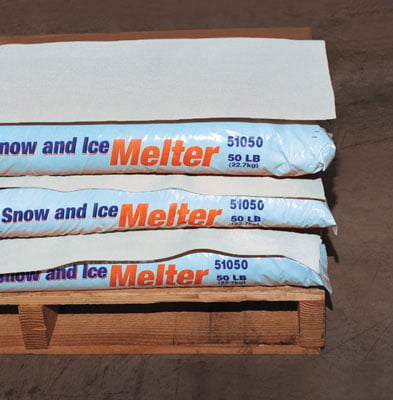Stabilizing Loads With Slip Sheets For Stretch Wrapping
Did you know that you can stabilize slippery stretch wrapped loads with slip sheets? If you answered no, you are not alone!
Suppose you are like most companies who ship products. In that case, you probably use stretch film to properly contain and secure your palletized loads for transportation, shipping, and storage.
Stretch wrapping loads, for this reason, are a common practice implemented by countless companies worldwide.
People love how stretch film can wrap and secure their palleted products. But, some loads can be problematic due to slippery products.
These products can lead to lopsided loads and troublesome stretch wrapping processes. But thanks to slip sheets, these problems can be negated!
But, what exactly is a slip sheet? And how do they help slippery products get palletized properly?
Today, we will explore the world of slip sheets and explain how they can help you to contain your slippery loads of stretch-wrapped products better.

What Is A Slip Sheet?
Slip sheets, also known as anti-slip pallet sheets are sheets of material (most commonly paper) that are used to make slippery loads easier to wrap with stretch film.
These sheets look and feel like giant pieces of paper. And while these paper sheets are not very good for writing or art projects, they do a fantastic job of helping your slippery products stay put on your pallets!
Slip sheets help to increase pallet stability by preventing products from falling off of their pallets. They also help to prevent loads from shifting and prevent damage to your products.
Slip sheets significantly improve friction between the layers of your palleted products so that bagged products, cartons, boxes, and similar objects stay in place. Most slip sheets are recyclable as well as non-toxic.
There are also water-resistant slip sheets available that are useful for palletizing stretched wrapped loads that are exposed to the elements and outdoors.
How much money can you save with an automated stretch wrapper?
How Do Slip Sheets Work?
Slip sheets are placed in between layers of products (such as bags of rock salt) as a pallet is stacked. The sheets are placed between each layer, including under the first product and on top of the last.
Next, the pallet is wrapped as usual with either hand stretch film or machine stretch film, which is applied with an automatic stretch wrapper.
After the sheets have been applied and the pallet has been wrapped, the pallets are stored and transported as usual.
The layers of sheets that rest between each layer of products prevent the palleted products from slipping off the pallet or sliding around during transportation.
This helps to prevent pallets from collapsing or leaning over during shipping.
What Are Some Common Applications For Slip Sheets?
Many companies use slip sheets to prevent slipping of slippery products during transportation.
Typical applications for slip sheets include the palletizing of slippery products such as bags of mulch, ice melt, birdseed, potting soil, and other bagged, cartoned, or boxed consumer goods.
Water-resistant slip sheets are commonly used for packaging items for home and garden stores, supermarkets, and department stores that store products in open-air facilities or other outdoor locations.
Where Can You Buy Slip Sheets?
Slip sheets may be purchased from slip sheet manufacturing companies or packaging distributors. You can also buy slip sheets from online retailers such as Uline and Amazon.
However, we must point out the fact that you can also purchase your slip sheets from us here at Industrial Packaging.
If you would like to get more information about slip sheets or place an order for these packaging materials, please contact one of our packaging experts.
They will be able to help you purchase the proper slip sheets for all of your anti-slip palletizing and product wrapping needs.
About Nathan Dube
As the Digital Marketing Specialist at Industrial Packaging, I am honored to create content for such a phenomenal company and work with one of the greatest teams in the Packaging Industry. Whether creating a video, writing blog posts or generating other pieces of content and multimedia, I am always excited to help educate and inspire our prospects and clients to reach their highest potential in regards to their packaging processes and needs.




